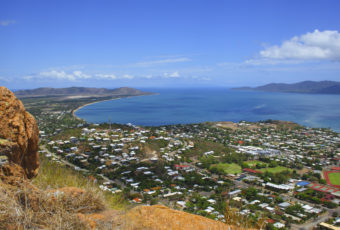The world found Nemo, but can we save him?
We all know the heart-warming tale of Finding Nemo, but clownfish populations on coral reefs have been declining since the film’s release, due to the popularity of a ‘Nemo’ in household aquariums.
Researchers from the University of Queensland and Flinders University have teamed up in an effort to ensure Nemo can be found exactly where he should be—in his sea anemone home on coral reefs.

The Saving Nemo Conservation Fund aims to provide education, awareness and captive breeding programs to protect popular marine ornamental species that are often captured on reefs for sale in pet shops.
UQ School of Biological Sciences PhD candidate and Saving Nemo Queensland Project Coordinator Carmen da Silva said the marine fish aquarium trade was a major cause of coral reef fish decline.
“What most people don’t realise is that about 90 per cent of marine fish found in aquarium shops come from the wild,” she said.
“Reef fish populations are already struggling due to warmer sea temperatures and ocean acidification caused by global warming.
“The last thing they need is to be plucked off reefs.”
The team has started an ambitious campaign to raise a million fish kisses on social media with the hashtag #fishkiss4nemo.
They hope to capture the attention of Ellen DeGeneres, who voices the loveable yet forgetful Dory in Finding Nemo and the upcoming sequel, Finding Dory.
Saving Nemo co-founders and Flinders University researchers Anita Nedosyko and Associate Professor Karen Burke da Silva said the release of the sequel in June could cause a resurgence of ornamental species being pilfered from reefs—this time Dory’s species, the blue tang.
Miss Nedosyko said people took the wrong message from the film.
“People fell in love with the adorable characters and wanted to keep them as pets, instead of understanding the film’s conservation message of keeping Nemo in the ocean where he belongs,” she said.
Professor Burke da Silva said the team has been running a clownfish breeding program for the past five years, selling sustainable clownfish to local aquariums.
“Clownfish are extremely easy to breed and females lay many eggs at a time so there is really no reason to collect them from the wild. Nursery-bred fish are also far happier and healthier in tanks than wild-caught fish,” she said.
The researchers are also examining how anemone venom can be used as a bio-active anti-cancer product.
You can give a #fishkiss4nemo on social media or go to www.savingnemo.org to get involved with the campaign.
Biological Sciences at the University of Queensland
The UQ School of Biological Sciences is situated on the St Lucia campus in Brisbane and is part of the Faculty of Science. Academic staff conduct research in evolution, global change biology, ecology, aquaculture, behaviour, physiology, entomology, zoology, botany, genomics, development and conservation biology. World-class infrastructure, proximity to stunning habitats and biodiversity, and UQ’s tropical-subtropical location contribute to its unique working environment.
*

































Ask A Question
Ask us about your program of interest, or if you have a question about our services.
CONTACT US TODAY